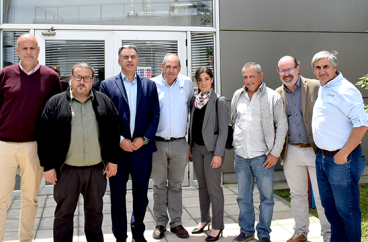
Instituto Nacional de Investigación Agropecuaria

ABSTRACT.- Feathering in apple nursery trees is a critical operation used to increase the quality of planting material. Plant growth regulators (PGR) could be used to form feathers in apple nursery trees. The main goal was to study the impact of different PGR and concentrations on feathering promotion in different nursery apple trees.

CONTENIDO. -- Síntesis de la Situación Agroclimática de Octubre-- Perspectivas Climáticas Trimestrales elaboradas por el IRI de la Universidad de Columbia (Más información puede encontrarse en el sitio del IRI:http://www.iri.columbia.edu) -- Índice de Vegetación (NDVI) -- Precipitaciones -- Porcentaje de agua disponible (PAD) -- Agua no retenida (ANR) -- Índice de bienestar hídrico (IBH) -- Perspectivas Climáticas nov-dic-ene elaboradas por el IRI de la Universidad de Columbia. -- Destacamos para este mes:Pronóstico de DON en trigo.

Regenerative livestock farming as a productive activity derives from the concept of regenerative agriculture. ----- SECTIONS:1. What is regenerative livestock farming?. -- 2. Scientific evidence for the improvement of environmental indicators. -- 3. Background of the proposal. -- 4. INIA's proposal. -- 5. Scaling up the proposal and INIA's role. -- 6. Acknowledgements. -- 7. References.

RESUMEN:El objetivo de este estudio fue optimizar un análisis mediante PCR en tiempo real con curvas de disociación para la detección confiable y económica del inserto mutante de 7,5 Kb del elemento transponible bovino BoERVK en el exón 5 del gen de la Apolipoproteína B (APOB), determinante de la deficiencia de colesterol - CD - (OMIA 001965-9913).

La producción de cítricos de Uruguay está orientada al consumo en fresco y exportación a mercados exigentes como EEUU y Europa. La presencia de semillas en los frutos es un factor que limita la competitividad al causar una importante desvalorización del producto. El Programa de Mejoramiento Genético de Citrus de Uruguay ha orientado esfuerzos hacia la obtención de variedades de mandarinas triploides (3x) las cuales no producen semillas.